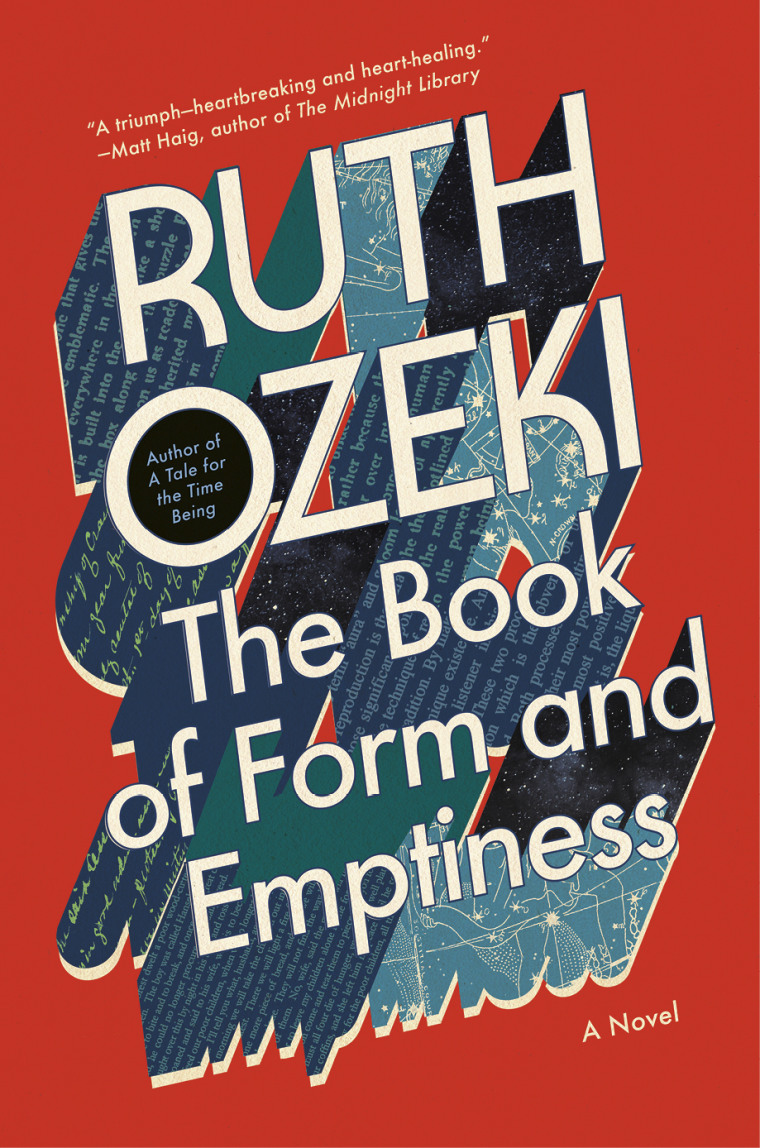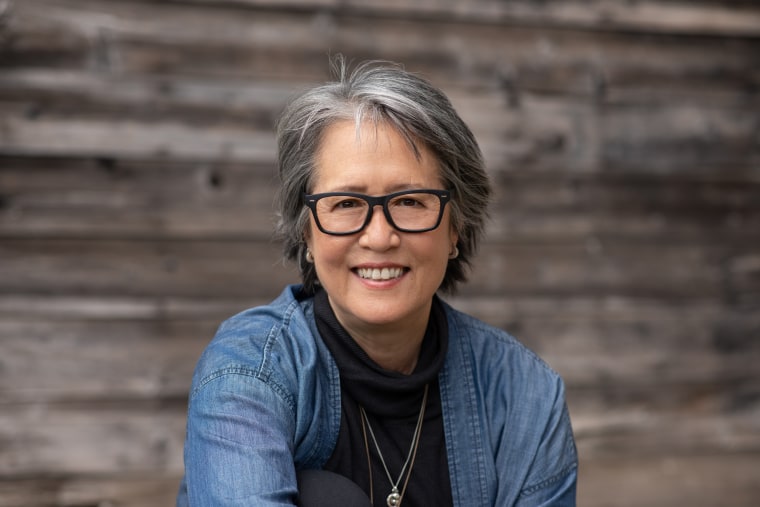For about a year after Ruth Ozeki’s father died in 1998, she would hear him clearly calling her name while she washed the dishes or folded laundry.
The award-winning author, filmmaker and Soto Zen priest has explored the grief-induced phenomenon of people hearing voices of loved ones lost for her latest novel. “The Book of Form and Emptiness” follows Annabelle Oh and her teenage son, Benny, who starts to hear voices emanating from inanimate things — a rubber duck, scissors and even a pane of glass — after the tragic death of his Japanese Korean jazz musician father.

The book, Ozeki’s fifth, weaves together themes of loss, American consumption, mental health, Zen Buddhist philosophy and the transformative power of books and libraries.
“I was an only child so books were everything,” she told NBC Asian America. “They were my family, they were my playmates — they were just the world to me.”
The daughter of a Japanese linguist mother who was raised in Hawaii and a white American anthropologist father, Ozeki grew up in New Haven, Connecticut, where she said there were few Asian Americans at the time.
“A lot of the fathers in the neighborhood had fought in [World War II] and they had a certain view of what Asian women were for,” she said.
“I remember this old guy who worked at the farm supply store nearby always called me Suzie after Suzie Wong. I didn’t know what the reference was, but I thought it was so cool, and I named all of my dolls Suzie because I thought it was special.”
“The World of Suzie Wong” was a novel, play and 1960 film that starred Nancy Kwan playing a Chinese prostitute.
As a teenager, Ozeki experienced anxiety and depression, which led to a stay at a psychiatric ward at age 17. Books and writing assisted in her recovery.
She attended Smith College — where she now teaches creative writing — spending her sophomore year in Japan, and later trekked through the Himalayas. On the trip, while reading Gabriel García Márquez’s “One Hundred Years of Solitude,” she realized she had to write fiction.
After graduating in 1980 with degrees in English literature and Asian studies, Ozeki received a Japanese Ministry of Education fellowship to pursue graduate work in classical Japanese literature at Nara Women’s University.
While in Japan, she worked as a bar hostess, founded a language school and studied Noh drama and mask carving. She returned to the United States and worked as an art director on low-budget horror films before moving into directing documentaries for Japanese television.
Ozeki had drifted in and out of various meditative practices, but began getting serious about Tibetan Buddhism in the early 90s after her father suffered a serious heart attack. “That was the first time I had a really strong realization of sickness, old age and death,” she said.
By 1994, she had made her own film, “Body of Correspondence,” which aired on PBS, followed by “Halving the Bones,” an autobiographical film that screened at the Sundance Film Festival.
Realizing that writing was cheaper than filmmaking, Ozeki published her first novel, “My Year of Meats,” in 1998, when she was 42. Born Ruth Lounsbury, she took the pen name Ozeki — her friend’s last name — to better reflect her identity and because it freed her as a writer.
Her 2013 bestseller, “A Tale for the Time Being,” was shortlisted for the Man Booker Prize and won the L.A. Times Book Prize, among other awards.
She met the poet and Soto Zen priest Norman Fischer in 2000. After practicing with him for about 10 years, she realized Buddhism was becoming central in her life and she wanted to “help pass it along.”
Ozeki — who is married to the environmental artist Oliver Kellhammer and divides her time between the remote Cortes Island, British Columbia, and New York City — was ordained as a Zen Buddhist priest in 2010, and said her practice influences her writing in countless ways.
“When I get impatient, which happens all the time, I know how to work with that impatience. I spend a lot of time not knowing what’s going to happen when I’m writing, so when that happens I know how to sit with that and not let it knock me off balance,” she said.
Both “A Tale for the Time Being” and “The Book of Form and Emptiness” are metafictional works that feature overtly Buddhist characters and teachings. Other Asian American authors, such as Maxine Hong Kingston, Lan Cao and Emily X.R. Pan also incorporate Buddhist themes into their works, but Ozeki doesn’t think of herself as a pioneer of a new genre of Asian American Buddhist literature.
“Categories are more for academics and booksellers and librarians,” she said. “I’m not dissing that, but for me, every time I find myself in a category, I want to break it.”
